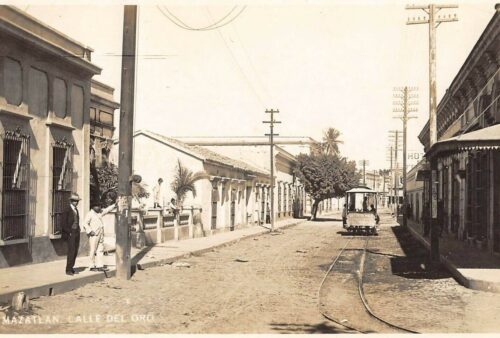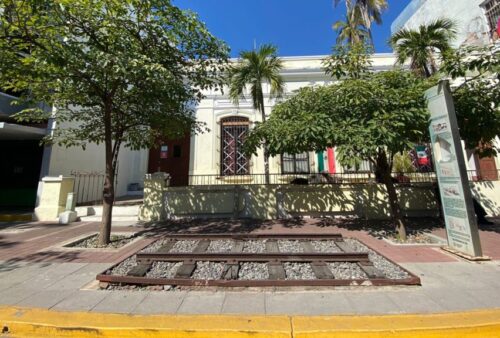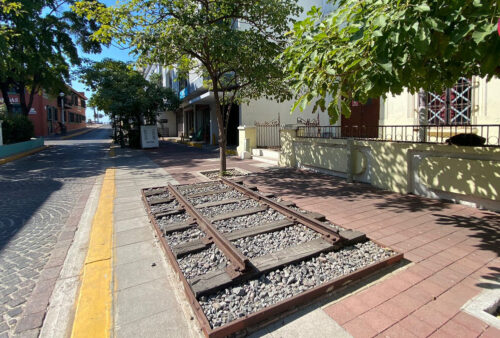Calle del Oro, now Sixto Osuna Street
It is said that this street was named after the shipments of gold transported to the dock. Another version suggests that the street housed assay houses. Undoubtedly, along this ancient road was the Bradbury family residence, owners of the legendary Tajo and Rosario Mines. In April 1897 alone, these mines produced 10,000 kilograms of pure silver and 500 kilograms of gold, which were transported down this street.
Along Sixto Osuna Street were the estates of the founding families of Mazatlán.
In addition to the belief that there was gold, it was a bustling thoroughfare. At one of its corners, the first office equipment distributor in Mazatlán operated, owned by the United Typewriter & Supplies Company, selling typewriters and accessories. The manager at the end of the 19th century was the American J.H. Reider. Also in this estate was the Jewelry and Watch Store Marschall, owned by Heraclio Félix Díaz, a politician, and writer. Calle del Oro was also home to La Bola de Oro, a highly famous commercial establishment in its time. The presence of so many famous and popular businesses truly honored its name.
On May 5, 1877, at 2:00 p.m., the public transportation service of a mule-drawn tram was inaugurated, symbolizing the city's modernity at that historical moment. The track was laid over two years, starting from the Maritime Customs through Arsenal Street to the terminal on Astillero Street (now Francisco Serrano), passing through Sixto Osuna Street, circling Plazuela Machado, and continuing down Constitución Street to complete the route. The tram cars had a capacity for 12 people and cost 6.25 cents for a complete trip. Part of the tram tracks can still be seen outside the archaeological museum of Mazatlán.
This was a symbol of the city's modernity at that historical moment, as only major cities of the time had such means of transporting passengers.
Since the first half of the 20th century, the street has been named Sixto Osuna. The full name of this journalist and writer was Sixto Osuna Paredes. His two most well-known poems are "La tarde apacible" and "La Dolorosa," which were published in the "Antología Sinaloense" by Ernesto Higuera, edited by General Gabriel Leyva Velázquez's government.
Did you know?
Through this street, in just the month of April 1897, 10,000 kilograms of pure silver and 500 kilograms of gold were transported.
📍 Location
Sixto Osuna Street, Downtown, 82000 Mazatlán, Sinaloa.






